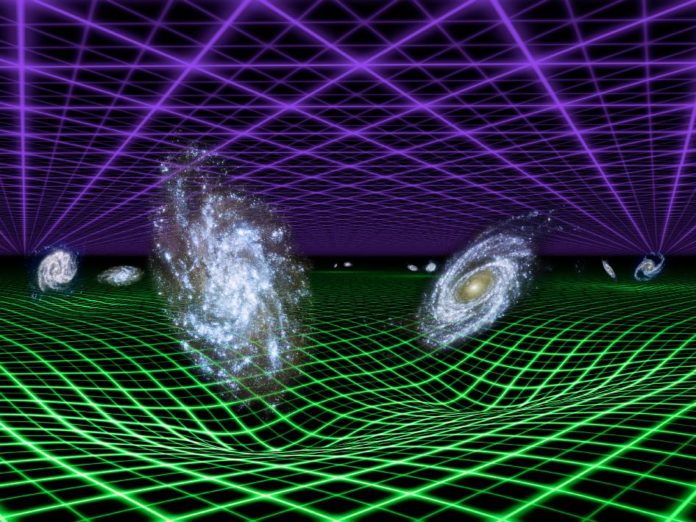A well-accepted modern theory in physics is that the normal matter and energy that observable objects are composed of comprises only 5 percent of what actually exists in the known universe. The other 95 percent is made up of mysterious “stuff” called dark matter and dark energy. Dark energy is believed by most scientists to be the cause of the accelerating expansion of the universe.
Scientists don’t currently know what dark energy really is, but, as one would expect, there are many theories. One popular theory about what causes the universe to expand at an increasing rate is that dark energy is actually a fifth fundamental force of nature. Physicists have currently confirmed four fundamental forces: Gravity, electromagnetism, the strong nuclear force and the weak nuclear force.
When data from the Hubble telescope discovered the accelerating expansion of the universe in the 1990s, it overturned the well-accepted model of how the universe worked at that time. Scientists decided to refer to the phenomenon as “dark energy” because they were completely in the dark about the nature of the situation.
Recently, a team of scientific researchers devised an experiment that would test the theory of a fifth fundamental force of nature by observing the behavior of individual atoms. Scientists at the Imperial College London and the University of Nottingham postulated that dark energy, if it is indeed a fifth force of nature, is weaker when surrounded by normal matter such as stars and galaxies but stronger when it is present in the vacuum of deep space.
If the results of the experiment showed this effect in action, then it would provide evidence of a fifth fundamental force that acts like a type of “anti-gravity.” The team of researchers set up a tabletop experiment in a basement laboratory in London that consisted of a small metal sphere and a single atom contained in a vacuum chamber. According to theory, if there were a fifth fundamental force, the atom would react when the small metal sphere was brought closer to the atom.
The results of the experiment showed that there was no reaction as one would expect from a fifth force of nature. The leader of the team, Edmund Copeland, has concluded that these findings rule out many models of dark energy that are predicated upon a fifth fundamental force of nature.



